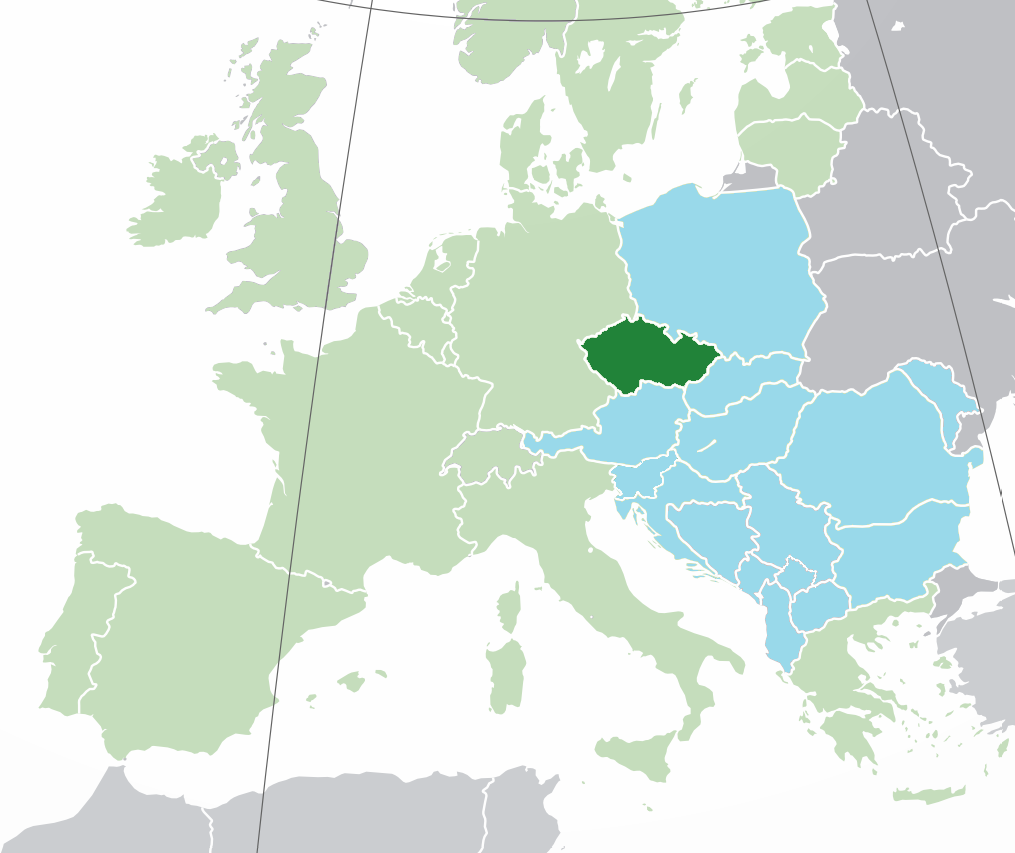Czech Republic

Czech Republic participates with three groups located at (click on the group for further information):
Faculty of Science, J. E. Purkyne University, Ústí nad Labem
Ice Photochemistry group, Masaryk University, Brno
Laboratory of Biocolloids, Faculty of Chemistry, Brno University of Technology
The group at the Faculty of Science of the J. E. Purkyne University in Ústí nad Labem, comprises experts in physical chemistry, chemical physics and molecular modelling. The group investigates physico-chemical phenomena in various aqueous and non-aqueous systems by means of a wide range of methods. Studied systems include pure and seawater in stable and metastable liquid region, aqueous solutions of nonpolar, polar and ionic solutes, solutions of macromolecules subjected to strong electric field, or solutions of pharmaceutically important chiral molecules. Theoretical methods include virial expansion, perturbed equations of state, and molecular simulation. Experimental work involves highly accurate density and viscosity measurement in binary and ternary mixtures. We focus on the molecular-level understanding of the studied phenomena as a prerequisite for a truly predictive approach. Involvement of students at all levels of study into research projects constitutes an important component of faculty ambience and strengthens the interdisciplinary nature of our research. Theoretical and computational work is backed by computer cluster available to researchers and
Ph.D. candidates. A computer laboratory equipped with powerful workstations is available for teaching computational courses and for scientific projects of undergraduate and graduate students. High precision densimeter, sound velocity meter, and viscometer are used for obtaining high quality data for liquid mixtures allowing for a critical assessment of semi-empirical and semi-theoretical equations of state.
The Ice Photochemistry group at Masaryk University, Brno, investigates the hydration of organic and inorganic molecules in the frozen state and their interactions and (photo)reactivity on ice surface. The original motivation was to produce relevant models for environmental pollutants: we quantified the aggregation, pH jump, and solvatochromic change caused by freezing and altered photoreactivity in the frozen state. In the last five years, our attention has turned towards understanding various impacts that freezing and lyophilization can exert on proteins. We have examined the relative tendency of ions to incorporate in the crystal lattice of ice Ih as such series of ions can be compared to the Hofmeister behaviour. In this context, an instrument has been developed to measure the electric potential accompanying the freezing process (the Workman-Reynolds potential). Most importantly, however, we have found a freezing method that minimizes the detriments and would like to develop the technique further. We use specialized equipment to study the (frozen) samples via optical spectroscopy (UV-Vis, luminescence, transient absorption) in the steady state or through the time-resolved method (femtosecond, nanoseconds, seconds to days) with precise temperature control (77 – 400 K). Besides the possibility of being frozen, the samples can also be deposited from the gas phase and irradiated in the frozen state. To identify the products, a full chemical analysis (HPLC, GC-MS, IR, NMR) is available.
The group of Brno University of Technology, Faculty of Chemistry is located at the Laboratory of Biocolloids. The group is focused on various aspects of applied physical chemistry including colloidal systems. Its research interests cover hydrogels, polysaccharides, soil or organic natural matter (especially humic substances), applications of advanced fluorescence techniques in biocolloid and biological research, physico-chemical aspects of cell metabolism. The laboratories of this group are well equipped with techniques to characterize and study hydrocolloids or biopolymer systems – for instance steady and time-resolved fluorescence, fluorescence correlation spectroscopy, thermal analysis and microcalorimetry, rheology, high resolution ultrasound spectrometry, infrared and Raman spectroscopy or equipment to study diffusion processes in liquids and hydrogels. The issues of hydration is an integral part of the group’s research – for example, the study of biopolymer hydration by ultrasound, densitometric, or thermoanalytical techniques, binding of water to biocolloids, the role of polymeric metabolites in the cell resistance to freezing stress or typology of cellular water. Members of the group are involved in teaching of a variety of courses ranging from basic physical and colloid chemistry through biopolymers or biophysical chemistry up to rheology or supramolecular chemistry. About 80 students, from undergraduate to postgraduate levels, directly participate in the research of this group.
